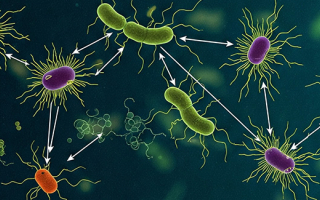20-Year Study of Nitrogen Pollution in West Falmouth Harbor Receives Renewal Funding

The National Science Foundation (NSF) has awarded the Marine Biological Laboratory (MBL) 5 years in renewal funding for a study of the impacts of nitrogen pollution on West Falmouth Harbor, a site just eight miles north of Woods Hole on Buzzards Bay. The grant is through the NSF’s Long-Term Research in Environmental Biology (LTREB) program.
This grant continues work begun almost 20 years ago in an ongoing collaboration between scientists at Cornell University and the MBL’s Ecosystem Center. Key personnel are Mirta Teichberg and Ketil Koop-Jakobsen at the MBL, and Roxanne Marino and Melanie Hayn at Cornell. Bob Howarth, a professor at Cornell and adjunct scientist at the MBL, is the project director.

West Falmouth Harbor has received high inputs of nitrogen for the past 20 years from groundwater contaminated by the Falmouth municipal wastewater treatment uphill from the harbor. Phosphorus is retained in the aquifer, and so only the nitrogen load has increased. Consequently, this one of the few nitrogen-only addition “experiments” for any coastal ecosystem.
The increased nitrogen inputs have led to eutrophication and some die-off of seagrasses, although substantial seagrass beds remain. The nitrogen load to the harbor is expected to decrease over the coming years due to improved wastewater management, affording an excellent opportunity to observe a seagrass-dominated ecosystem recover from eutrophication. This research will help inform efforts to better protect and restore seagrass habitat and water quality.
Seagrass beds provide critical habitat and nursery ground for many species, help maintain water quality by filtering nutrients, and may store substantial quantities of carbon taken up from the atmosphere. Globally and in the United States, seagrasses are being lost at an accelerating rate, with nutrient pollution being a major cause.
This project examines the interaction of nutrient pollution with climate change and climatic variability on the ecological functioning of West Falmouth Harbor. Major foci include the extent to which the seagrasses store carbon and remove nutrients, particularly nitrogen, which most often limits photosynthesis and plant growth in coastal marine environments, thereby reducing environmental degradation in coastal waters.
Shallow coastal ecosystems such as West Falmouth Harbor are very vulnerable to nutrient pollution, but they are far less well understood than deeper, phytoplankton-based systems, whether lakes or estuaries. The long-term data set to be continued with this LTREB renewal is the only one globally for a eutrophic and nitrogen-polluted, shallow seagrass-dominated ecosystem. These data allow exploration of several fundamental questions, including whether nitrogen or phosphorus is more limiting in these types of ecosystems; how supplies of nitrogen and phosphorus from coastal ocean sources influence nutrient limitation; how climate-driven changes in ocean circulation may be altering the ocean source of nitrogen and phosphorus; how climatic variability affects rates of metabolism; and how climate and nutrients interact to regulate the storage of organic carbon in seagrass-dominated ecosystems in the temperate zone.




